Machine learning enables derive patterns that help businesses to enhance their customer experience and subsequently increase their market share. Rishabh Software blends this business knowledge with technology to help food delivery companies optimize operations, accelerate delivery times & enhance the customer experience to outperform the competition.
An on-demand food delivery model connects merchants, riders, and end customers likewise. It helps collate the data from past orders and user consumption patterns. Using Big Data & Analytics, the food delivery companies can track several operational aspects like traffic, climatic conditions, obstacles in the delivery route, and analyze how food can be delivered faster. The AI & ML systems offer insights about the route status in real-time to the delivery person for ensuring that the food gets delivered on time, every time!
Still on the fence about how to leverage Analytics & Machine Learning in food delivery? Then this article will show you how these emerging technologies like Machine Learning can help optimize delivery cost & time for profitable business outcomes. Further, you can even expect to get inputs on how to go about building a fully functional predictive model that is sure to satisfy more customers with quicker & quality service!
Let’s dive right in!
Food Delivery Data Analytics to Optimize Delivery Times & Accelerate Business Growth
Faster delivery time is one of the most important factors that ensure success for the food delivery app. It most certainly offers a front-line edge to your business over the competition.
Rishabh Software team specializes in developing data analytics-based solutions that enable food aggregators, cloud kitchens, and other businesses in this domain to seamlessly optimize delivery cycles across the board while ensuring customer delight!
With our experience, we support businesses to better address the below scenarios during the delivery phase:
- An early dispatch that makes a delivery partner wait while the food is being prepared
- A late dispatch leading to the food item losing its freshness and resulting in an unpleasant customer experience
Below are the five actionable elements that we put to practice while deriving a food delivery time prediction model:
1. Identify Potential Roadblocks
It starts with taking into consideration the delivery information as the input with the desired pick-up time as the output.
Some crucial factors for consideration include:
- The deliveries can be bulky and may need cars/vans
- The suppliers can range from caterers, cafes to restaurants and even hotels with unique characteristics
- Delivery partners may arrive at the supplier’s location at the pre-defined time, provided the number of drivers is sufficient. However, this may not always be the case.
- Food should not be delivered too early else; it will sit on a table and turn cold by the time it reaches the customer
- Nor should it be delivered so late that a hungry customer loses interest
2. Data Collection & Activity Recognition
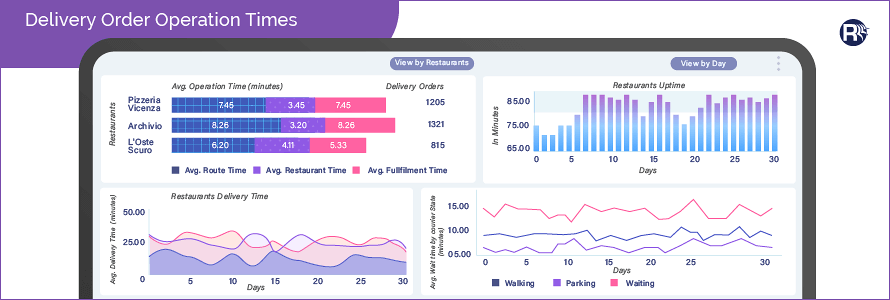
We leverage your food delivery dataset to enable you to stay competitive with a top-of-the-mind recall. For this, we implement an ML-based architecture that helps with:
- Collection of motion data from sensors like accelerometers and gyroscopes from delivery partner’s mobile device
- Recognizing activities with labels like driving, cycling, walking, running, tilting, still, and the unknown using APIs
And as an input to our predictive model, we divide the data into three broad categories:
- Orders placed: What people order, who is the supplier, what is the delivery time
- Consumer demographics: Who placed the order, their delivery location, their preferences
- Delivery performance: The duration of previous deliveries & their performance ratings
These data pointers are combined with other variables to execute one-hot-encoding. It helps with the creation of several binary variables for every possible data set. The variables are then fed into the predictive model for training.
3. Model Creation Essentials
We divide the food delivery optimization cycle into three components:
1. Collection of food from the vendor (restaurant and others)
2. Drive from the vendor’s location to the customer’s address
3. Deliver the food package
The time taken for every component is then added to arrive at the final delivery time. Other aspects that are taken into consideration while considering the food delivery route optimization model would include;
Vendor Pick-up
- Parking issues (city center & residential areas)
- Difficult to access areas (postcode)
- Food not prepared on time
- Part(s) of the food parcel missing
Point-to-point Travel Time
- Known pick-up & delivery points (Google map APIs)
- Fluctuating traffic
- Road closures
- Work in progress
- Accidents
Point of Delivery
- Height restrictions for car
- No car parking
- Security & access issues
- Tricky locations
4. Implement Datasets for Intelligent Time Analysis
To feed the trip-level data into the model, we assemble the dataset as suggested below:
(restaurant1, rider1, timestamp1, parked)
(restaurant1, rider1, timestamp2, waiting_at_restaurant)
(restaurant1, rider1, timestamp3, walking_to_bike)
(restaurant1, rider1, timestamp4, enroute_to_eater)
The model further analyzes activity data such as routes, parking status, vehicle type, traffic conditions, food preparation time, & delivery time, and more from the previous orders & draws useful insights.
For instance,
Break pick-up & drop-off in stages like On a trip – walk – service time – walk back
5. Improve Estimates & Minimize Wait Times
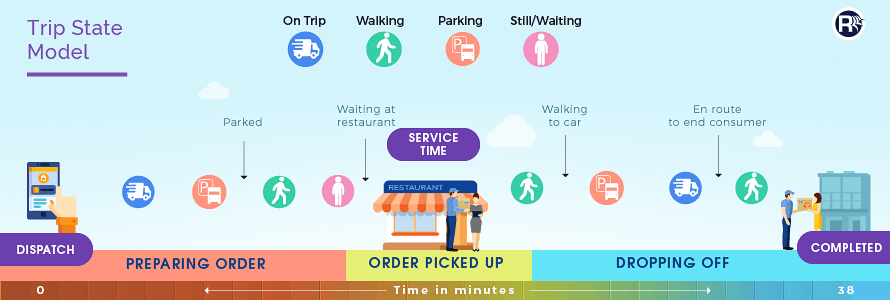
The detailed breakdown of trip state helps predict food delivery time using Machine Learning and optimize performance across stages, including:
Service Time
- Identify the busy service time window or the expected order preparation time at the pick-up location
On Trip
- Dispatch delivery partners depending on the vehicle type, route restrictions, order preparation time, parking spot, and other conditions
- Notify drivers of the nearest available parking slot through the mobile app interface
On The Move
- Mobile phone’s GPS location helps calculate routing specific data, with distances between the restaurant and delivery location, as well as places in between
- Direction suggestions help the riders to navigate through the shortest route between the restaurant & drop-off place easily
Real-world Application of Food Delivery Analytics
How DoorDash Drove its Way to Rapid Success with On-demand Deliveries
Right from predicting the need for inventory to food prep time, this startup takes a data-driven approach to decision-making. They leverage capacity planning algorithms to accurately predict the need for manpower on a given day.
With an autonomous dispatch system that combines ML & Big Data technologies, they can address the constantly fluctuating customer preferences and demands. They also use the insights to optimize their food preparation and delivery time. This helps ensure that the drivers arrive right on time and food is delivered hot. Further with a logistics software system that provides a real-time view of deliveries, they can even ensure that the drivers are fast & efficient.
Map Out the Fast-changing Food Delivery Landscape
To conclude, our food delivery data analytics model helps businesses reduce delivery time by dividing the on-demand delivery cycle into granular stages.
Rishabh Software’s team continues to create smart solutions that cater to the varied needs of food delivery businesses. We assist them with scalable, robust, reliable architecture to improve the experience for restaurant & delivery partners and end customers. For a US-based organization, we helped automate the food delivery mechanism with back-office operations for payment and invoicing management.
To help you make the most of your customers’ data, we can design a custom on-demand app powered with food delivery data analytics and big data algorithms. It will enable you to get real-time insights into food prep time, GPS, delivery location, and traffic updates. Using this data, you can dispatch drivers on the most efficient route, reduce the wait time for customers, improve satisfaction rates & boost your ROI!
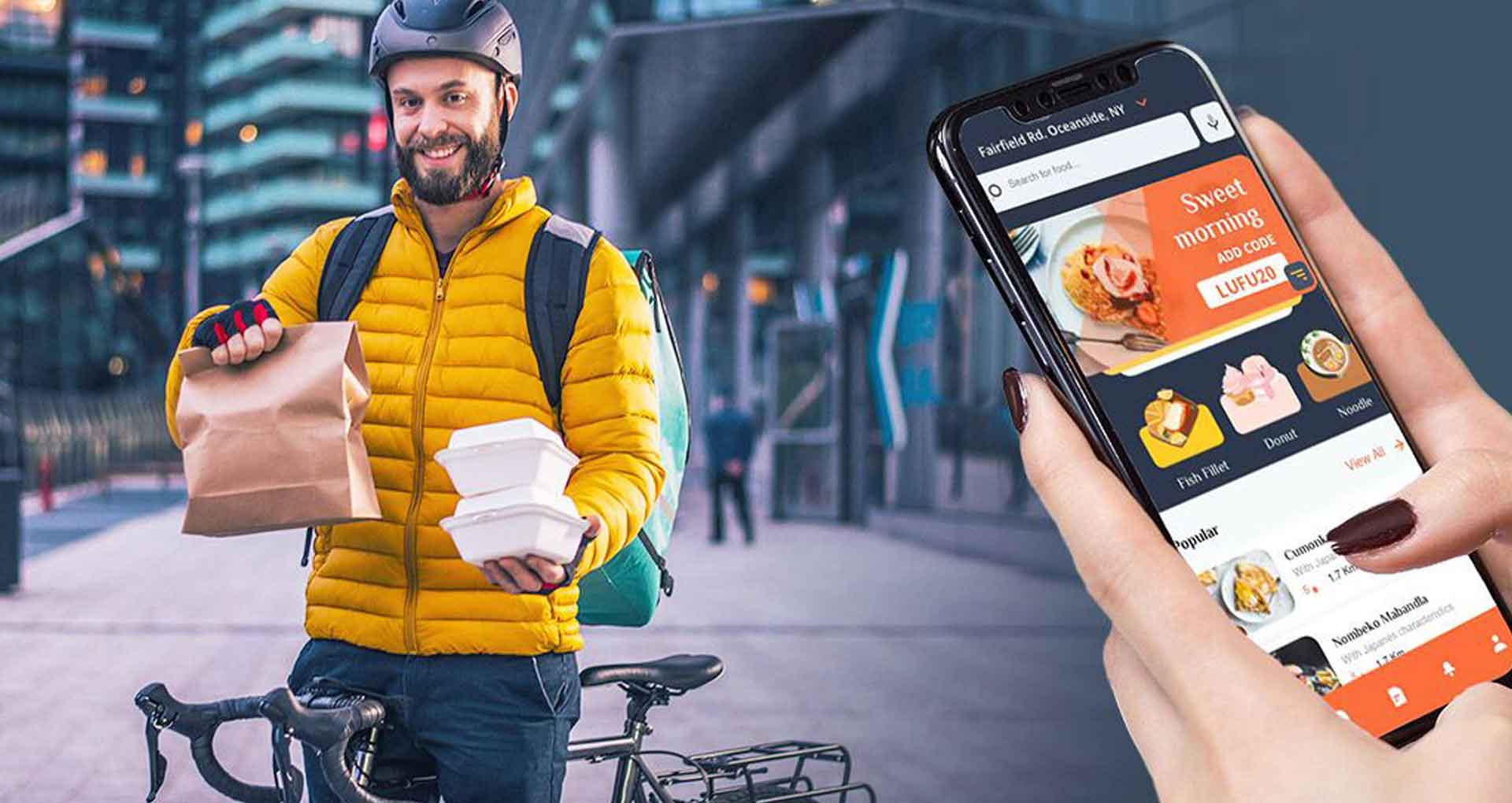
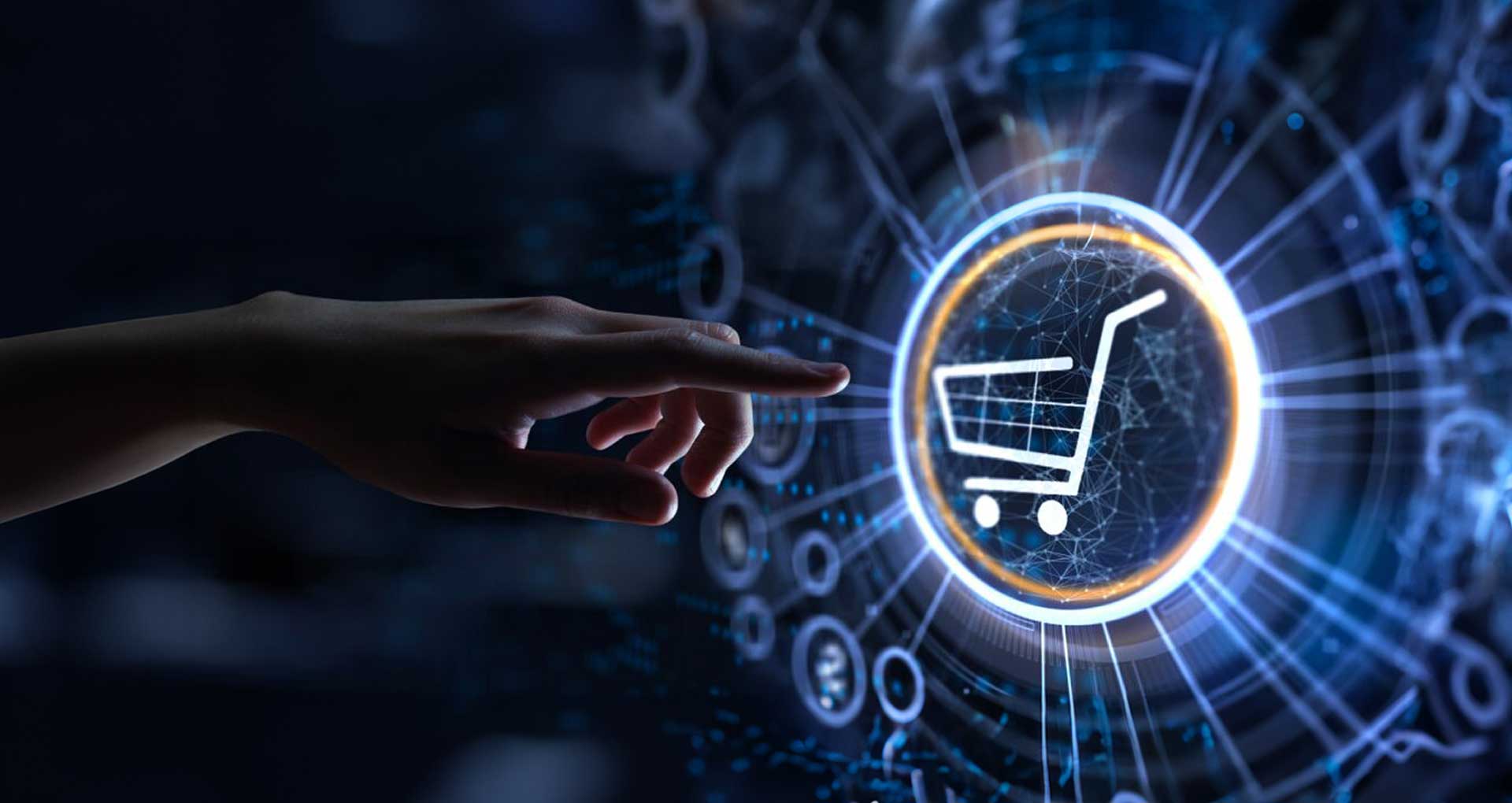
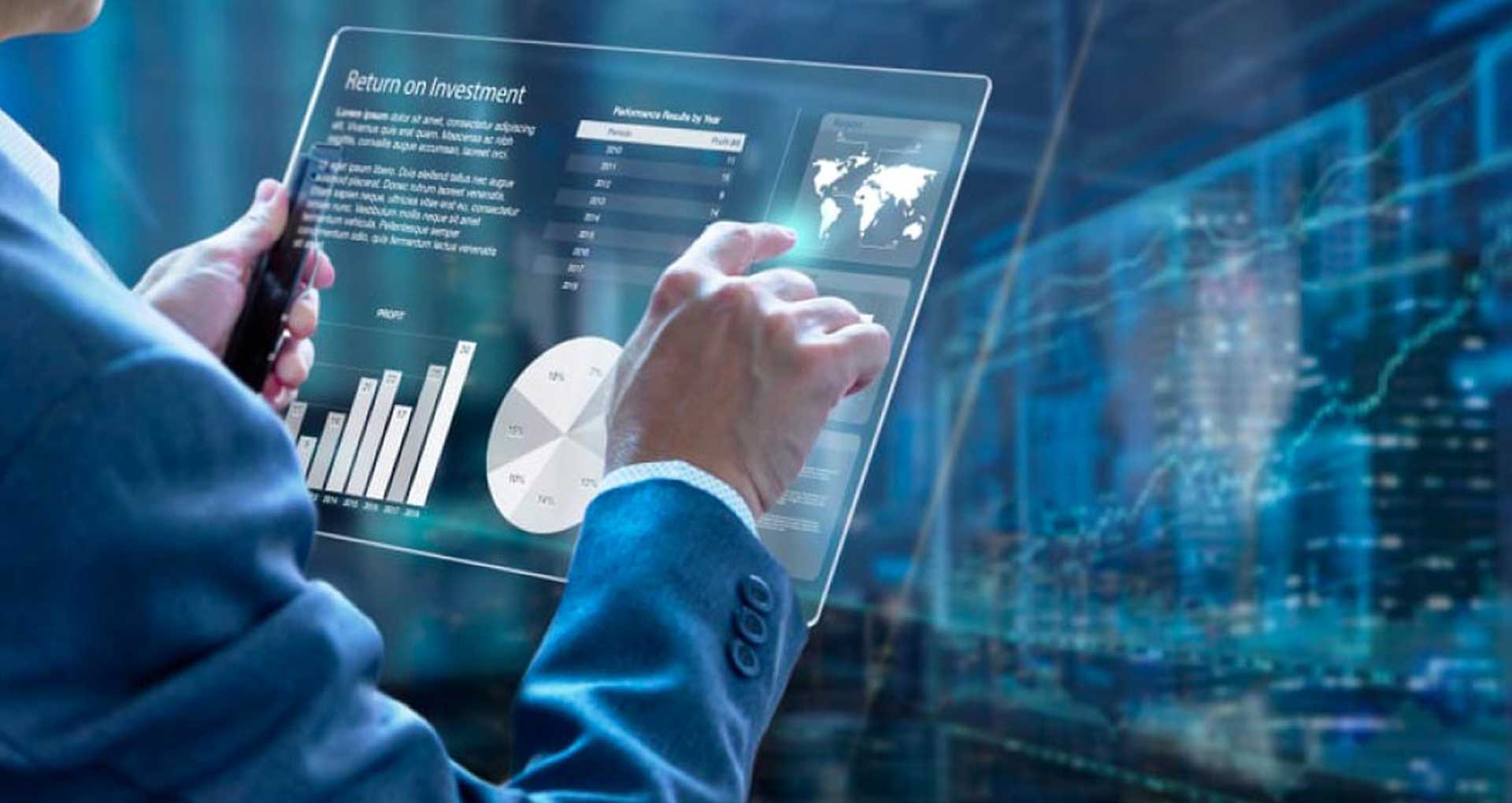

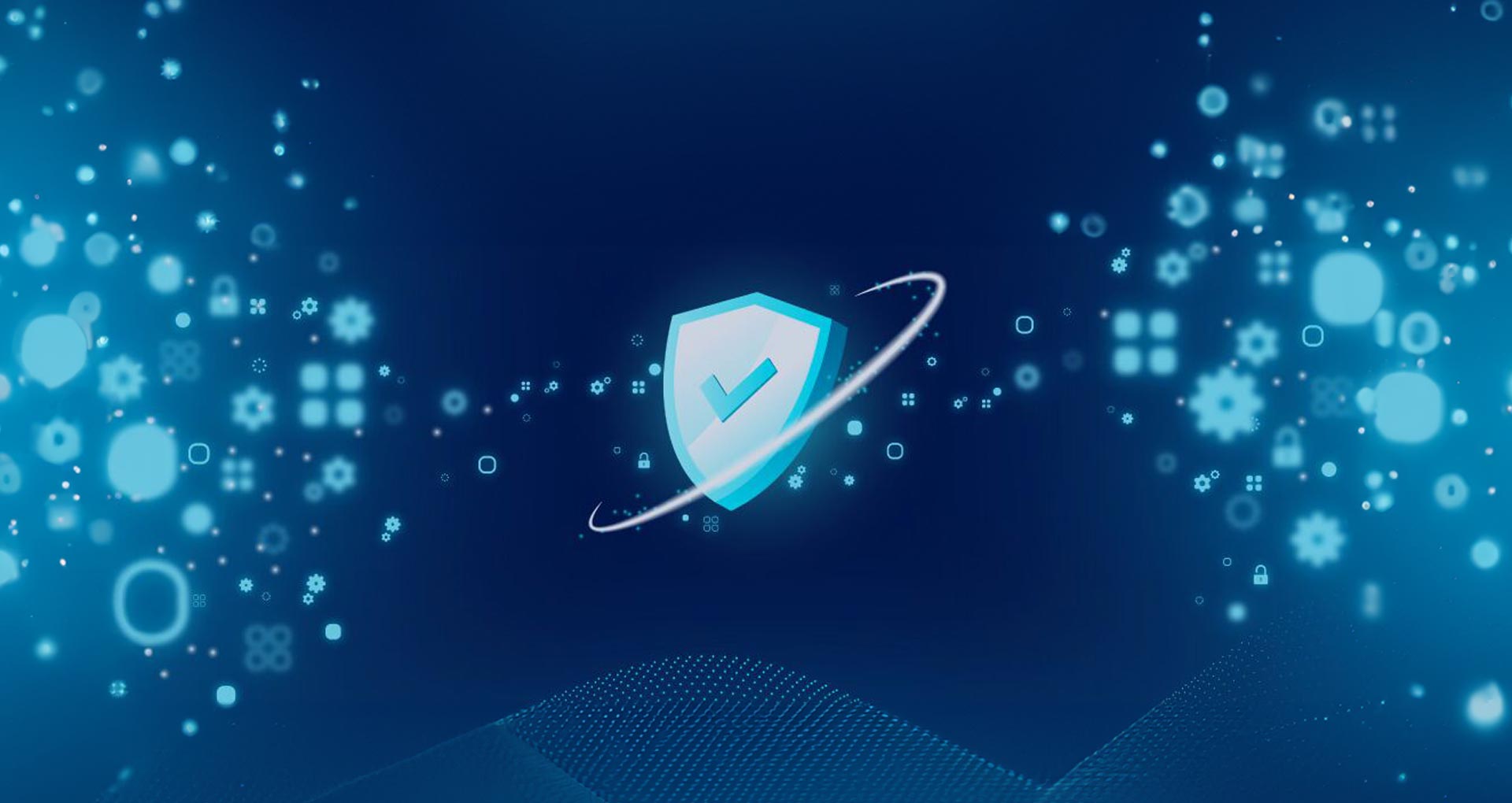
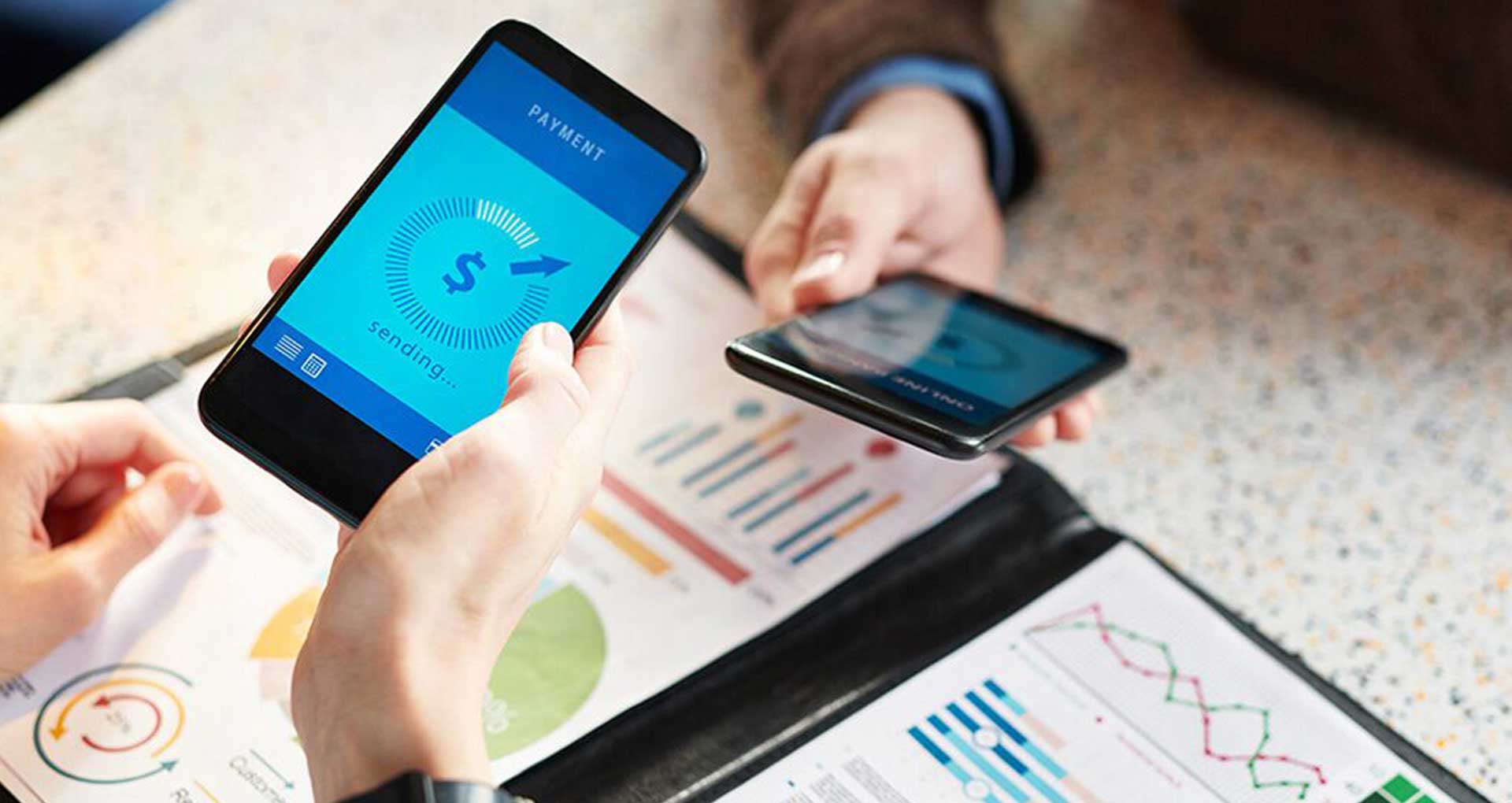





 30 Min
30 Min


